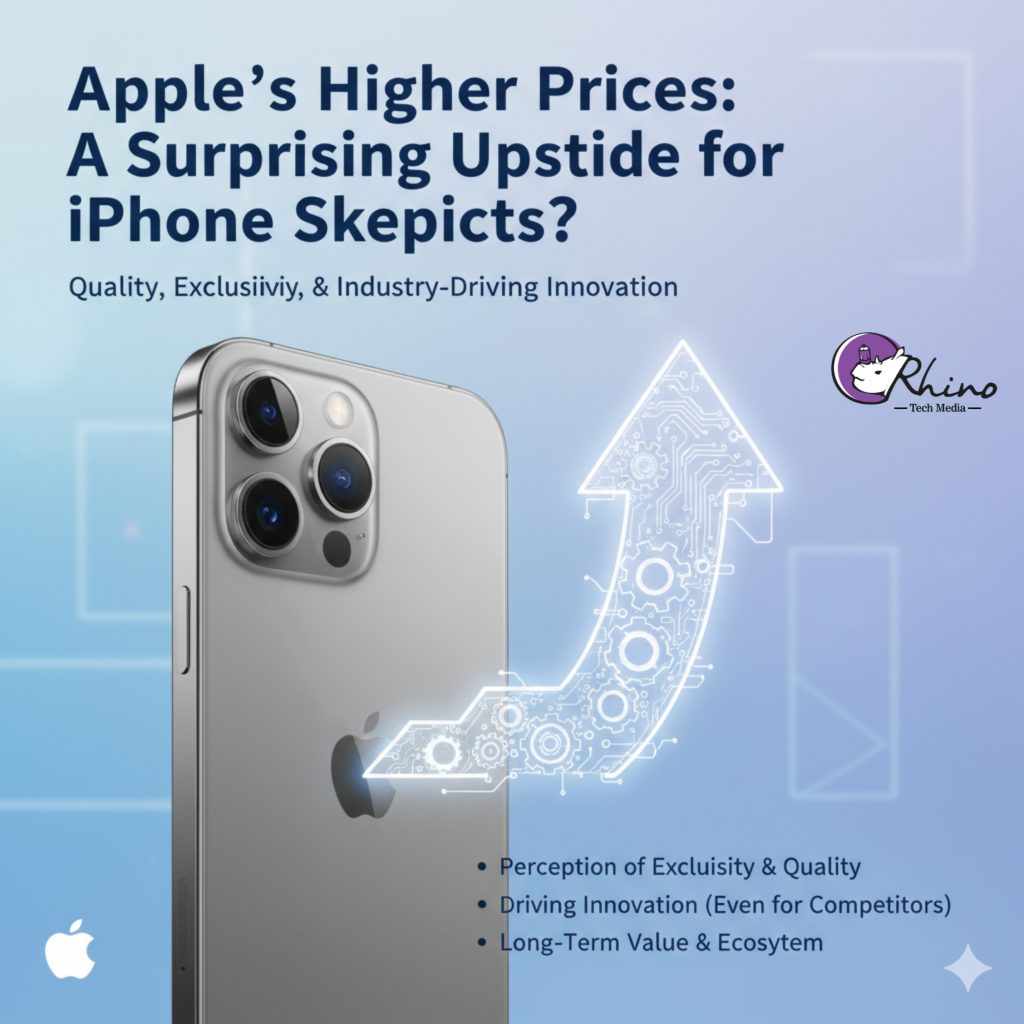Here’s an analytical essay on how Apple’s raising of iPhone prices might give doubters reason for optimism — considering both risks and opportunities. If you like, I can also prepare a shorter version or bullet-points.
Apple’s Higher Prices: Why Doubters Might Now Feel Hopeful
In September 2025, Apple unveiled its new iPhone lineup, including high‐end Pro versions and an ultrathin “Air” variant. While the features are not dramatically different from past years, what has caught attention is the higher price tags, especially on top models. For many who have been skeptical of Apple’s innovation pace — or worried about slowing growth — these higher prices are starting to be seen not merely as a burden, but as a possible sign of strength. This essay explores why the raised prices could offer reason for optimism, what the risks are, and how this plays into Apple’s broader strategy.
Why Higher Prices Might Inspire Optimism
- Margin protection and revenue growth despite modest upgrades
Even if feature changes are incremental, raising prices helps Apple maintain or grow its revenue and profit margins. Investors worried that “boring” upgrades (battery, displays, small design tweaks) weren’t enough now see pricing power as a buffer. As costs rise (from inflation, component costs, or tariffs), price hikes help prevent margin erosion. - Earlier upgrades driven by fear of future price increases
Some consumers who were delaying upgrades may now decide to buy sooner, anticipating that prices will only go up. This kind of “pull‐forward” demand can accelerate sales in current cycles. Reports from earlier in 2025 show that worries about tariffs and rising prices already pushed some buyers to replace older phones sooner than they otherwise would. - Strong demand for premium models
The Pro / Pro Max variants — that carry the highest price tags — seem to be seeing solid interest, which indicates that a portion of the market remains willing to pay for premium. This supports the idea that Apple’s brand and hardware ecosystem still command enough of a value premium to justify higher prices. When premium models sell well, they lift the “average selling price” (ASP), boosting revenues even if volumes aren’t surging. - Signal of confidence in market positioning
By increasing prices, Apple may be signaling that it believes its product differentiation, brand strength, ecosystem lock-in, and supply chain resilience are sufficient to sustain higher consumer willingness to pay. That signals to investors that Apple isn’t in a defensive posture, but rather able to lead from strength. - Offsetting external headwinds
Apple is facing upward pressures on costs — tariffs, rising component prices, supply chain challenges. Higher iPhone prices may be a necessary adjustment. If done carefully, it can preserve profitability without causing dramatic volume losses. Analysts have observed that Apple is considering or has implemented price hikes to absorb increased costs.
The Risks and Caveats
Of course, optimism must be tempered with realism. Some risks:
- Elasticity of demand: There is a limit to how much prices can be raised before customers begin to balk. Especially in markets outside the U.S., where incomes are lower or competition is more aggressive, a too-steep price increase could lead to declining unit sales.
- Feature fatigue: If upgrades are too incremental, some may not see the value in paying more. Without sufficiently compelling new features (be it in design, camera, AI, or other capabilities), higher price alone may not persuade.
- Competition intensifying: Rivals (Samsung, Google, others) may undercut Apple on price or provide more aggressive feature sets (especially around AI or novel form factors), which could draw customers away.
- Regulatory, trade, or supply‐chain risks: Tariffs, currency fluctuations, or supply disruptions may force cost increases that are even larger, squeezing margins or forcing Apple to absorb costs in some markets. Raises in costs may require even greater price hikes — but those could be more noticeable to consumers.
- Perception risks: If consumers perceive Apple is simply raising prices without innovating meaningfully, that could damage brand loyalty or lead to slower upgrade cycles in the future.
Strategic Implications & Outlook
Putting it all together, here are some strategic implications:
- Apple may be moving to emphasize “premium price + steady improvement” rather than feature-shock innovation. The strategy seems less about reinventing every year, and more about refining, crafting better hardware, sustaining ecosystem, and preserving margins.
- Investor sentiment could improve even without massive feature breakthroughs. The market is often more forgiving when revenue growth or margin expansion comes from pricing power rather than sheer unit growth; Apple seems to be tapping that. Reports indicate Apple’s stock rebounded somewhat after concerns around “lackluster” product excitement, likely because of optimism around price hikes.
- Potential shift in purchasing behavior: As more consumers anticipate rising prices, upgrade cycles may compress, leading to higher near-term sales. But that might come at the cost of fewer upgrades later unless new features or compelling design changes are introduced.
- Role of the new “Air” model: The ultrathin Air version could be a wildcard. It may attract those who have been sitting out (due to bulkiness or cost), offering a “premium feel” at a relatively lower price than top Pro models, pushing up average ASP without alienating mid-range buyers.
Conclusion
For those who had doubted Apple — whether due to concerns over stagnating innovation, slowing growth, or rising costs — the company’s decision (or necessity) to raise iPhone prices presents a mixed but promising picture. Higher prices, if absorbed without dramatic loss of sales volume, can protect profitability, encourage some consumers to upgrade sooner, and demonstrate that Apple’s premium positioning remains strong.
While not without risks, particularly concerning demand elasticity and competitive pressure, this pricing shift offers a reason for cautious optimism: Apple seems to be adjusting to new economic realities, and doing so in a way that may support both bottom-line strength and investor confidence, even in a year lacking blockbuster new features.

